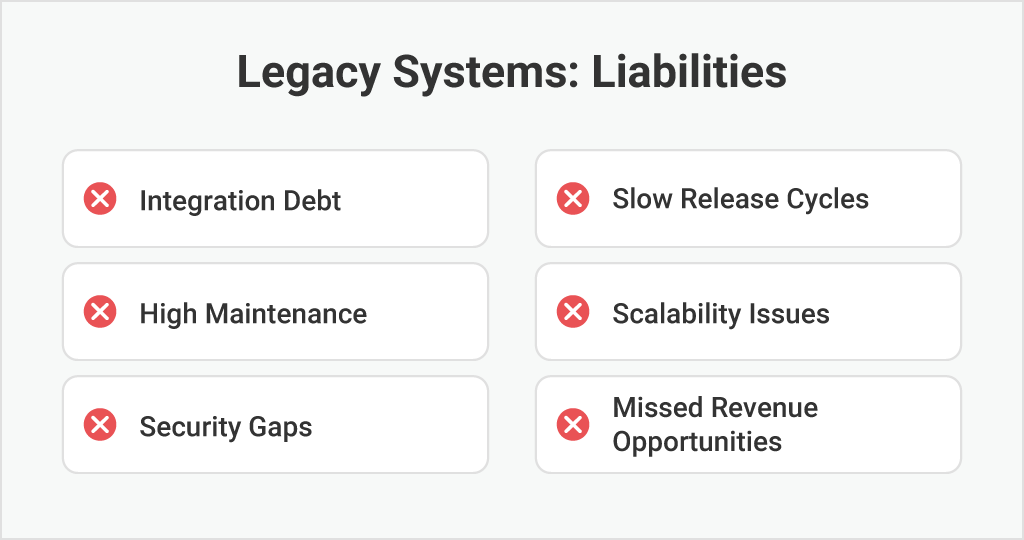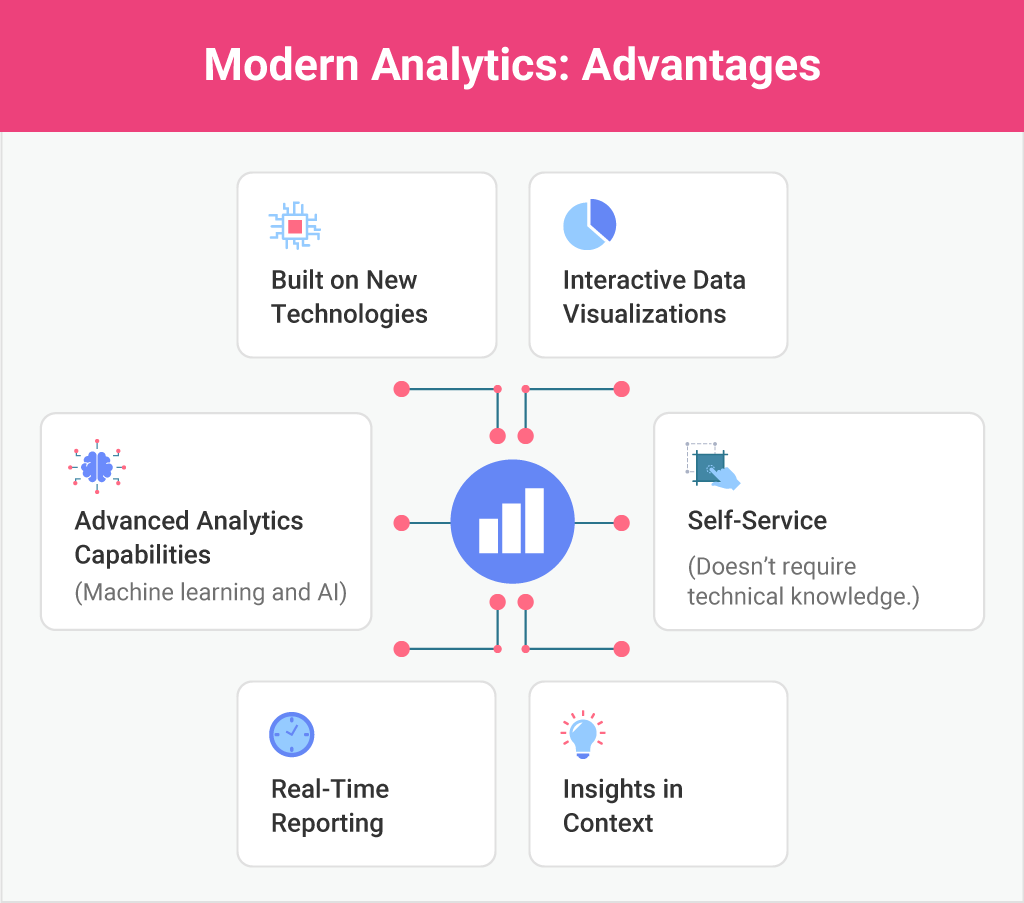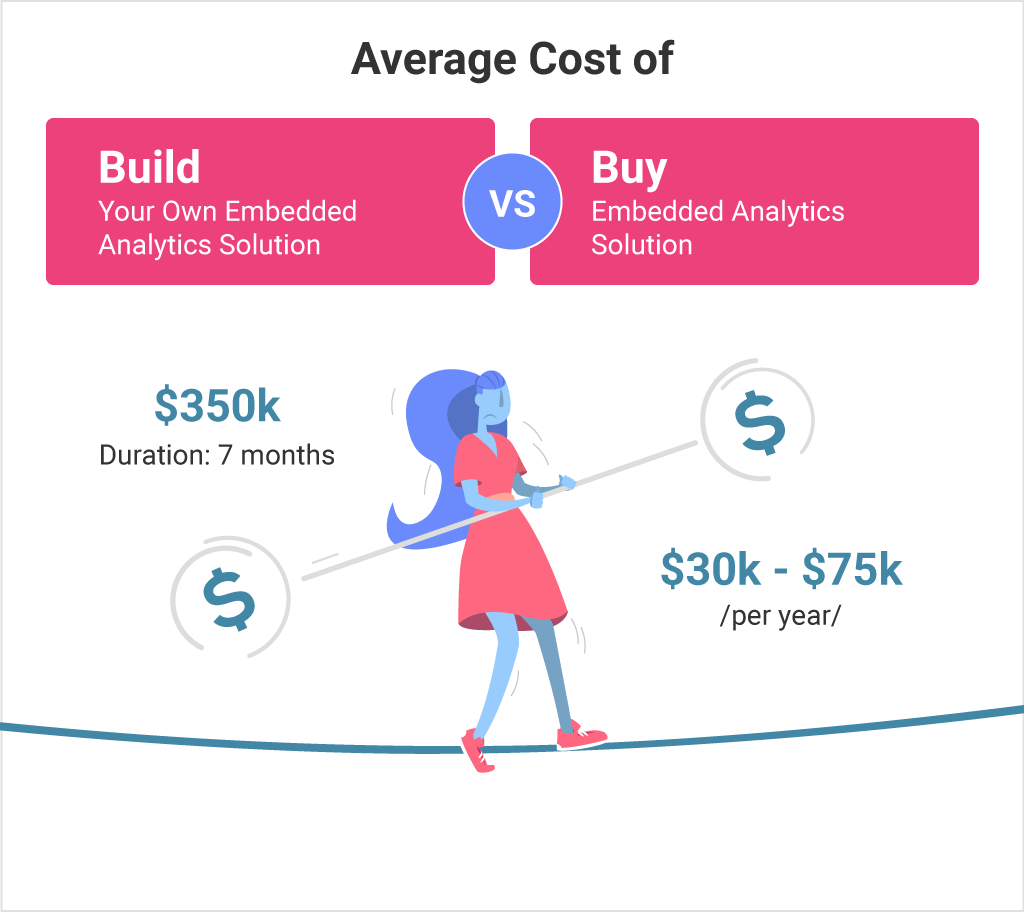
Scriptly Helps Pharmacies Identify Trends in Real Time with Reveal
Legacy BI systems create technical debt, slow product delivery, and limit user experience. Modern embedded analytics delivers real-time, branded insights, scalable architecture, and predictable costs. This guide compares old and new approaches, outlines how to choose the right platform, and shows how Reveal’s SDK-based solution helps SaaS companies and ISVs modernize without disruption.
Executive Summary:
Key Takeaways:
Users expect to see insights directly in the tools they use. Static PDFs, emailed reports, or delayed dashboards do not meet that need. They want interactive, branded views that refresh instantly and match the look and feel of the application.
Many organizations still rely on legacy analytics built for batch reporting and manual exports. These legacy BI systems slow decision-making, add maintenance overhead, and make product experiences feel outdated. As data volumes grow, they also struggle to perform at scale, creating frustration for both users and development teams.
As a result, the market has moved toward embedded analytics as the standard for delivering live, in-context data. Modern embedded analytics platforms integrate natively, support customization, and provide security models designed for multi-tenant environments. This shift is not theoretical. In 2024, 81% of tech leaders reported a significant rise in interest in Business Intelligence or Embedded Analytics.
Sticking with old enterprise BI approaches keeps your product on the wrong side of that trend. Legacy software modernization is no longer only about keeping up with technology. It is about delivering the experience your users already expect, before a competitor does it first.
This article will help CTOs, product leaders, and BI decision-makers evaluate the real cost of maintaining legacy systems, understand the benefits of modern embedded analytics, and identify what to look for when choosing the right platform. By the end, you will have a clear framework for replacing outdated tools with a solution that scales, secures, and brands insights as part of your product.
When choosing between legacy BI systems and modern embedded analytics, the differences go beyond features. They affect how quickly you can deliver updates, how secure your data is, and how well your analytics experience fits your product. The table below outlines the most important contrasts for CTOs evaluating an embedded BI platform upgrade.
| Feature | Legacy BI Systems | Modern Embedded BI Platforms |
|---|---|---|
| UX Customization | Limited styling and branding options | Full SDK-based control, including layout, theme, and logic |
| Real-Time Capabilities | Delayed, batch-based updates | Instant, real-time embedded dashboards |
| Security Model | Manual role setup, complex maintenance | Built-in row-level security and multi-tenancy |
| Mobile Responsiveness | Often absent or partial | Native mobile and responsive layouts |
| Maintenance Load | High, with frequent manual updates | Low-code, developer-friendly integration and updates |
| Embedding Options | iFrame or separate portal | SDK integration for a seamless user experience |
Upgrading from a legacy BI setup to a modern embedded approach is not just about adding speed. It reduces integration complexity, improves user adoption, and gives teams the tools to keep analytics in step with product growth. For SaaS and enterprise applications, the technical and business benefits compound over time.

For SaaS companies, ISVs, and product leaders, legacy BI systems are more than outdated technology. They are structural bottlenecks that slow delivery, increase costs, and limit what your product can achieve. In many cases, they become the single biggest blocker to a full analytics system upgrade.
Common liabilities include:
These challenges aren’t rare. In 2024, 32% of users identified legacy infrastructure as their main barrier to embedded analytics adoption.
Scriptly is the perfect example. The pharmacy software provider faced delays and limited visibility due to manual reports and disconnected tools. By replacing their legacy analytics with Reveal’s modern, embedded solution, they deployed real-time dashboards in under a week. The upgrade improved operational efficiency, gave pharmacists trend visibility, and supported faster decision-making—results that a patchwork legacy stack could never deliver.
For growing SaaS and enterprise platforms, holding on to legacy analytics means accepting slower innovation and higher risk. Each year without modernization compounds technical debt, making migration more complex and costly.

For SaaS companies and ISVs, analytics is no longer a side feature. It shapes how users perceive value, how often they return, and whether they upgrade. Modern embedded analytics makes it possible to deliver this value directly inside the product, without forcing users into separate tools or portals.
One of the strongest advantages is white-label analytics. Full control over themes, layouts, and workflows means analytics feels like part of your application, not an add-on. This seamless experience builds trust and strengthens your brand with every interaction.
Scalability is built in. Modern embedded BI platforms support multi-tenant architecture, elastic performance, and secure role-based access, making them ready for growth across users, customers, and markets.
Adoption increases with self-service analytics. Instead of waiting on development teams for every new metric or dashboard, users explore data independently. Combined with real-time insights, they can make decisions at the moment of need.
Advanced capabilities like AI-powered analytics turn analytics from reactive to predictive. Automated trend detection and natural language queries make data exploration easier for every user segment.
For those competing in the SaaS market, these capabilities aren’t optional. As seen in embedded analytics for SaaS companies, integrated, customizable, and scalable analytics directly support higher retention rates, better product stickiness, and new monetization paths.
Choosing whether to patch legacy BI systems or replace them with modern embedded analytics has long-term consequences. Retrofitting may appear faster, but it preserves the same limitations that slow delivery, increase costs, and limit scalability.
When retrofitting, the old architecture remains. Integration complexity, high maintenance demands, and outdated security models stay in place. Each update risks breaking connections, while the product experience struggles to keep pace with market expectations.

A complete analytics system upgrade removes these constraints. Modern platforms provide clean integration, lower maintenance costs, and advanced capabilities from day one. They also create opportunities for monetization and deeper user engagement that retrofits rarely match.
Signals that point to legacy software modernization include scaling bottlenecks, rising infrastructure expenses, low adoption of analytics features, and client demands for stronger governance. Waiting too long allows these problems to grow and makes migration more complex.
In many modernization projects, embedded analytics in app modernization becomes the turning point. The question changes from “Can the old system be fixed?” to “How soon can a future-ready solution be delivered?”
The right platform should fit both your technical environment and your business goals. Selecting a modern embedded analytics solution is not only about matching features. It’s about choosing a foundation that will scale with your product and users.
Key factors to evaluate:
Choosing well now reduces integration risk, speeds adoption, and creates monetization opportunities. The next step is finding a vendor that delivers these capabilities without adding complexity to your development process.
Reveal delivers the capabilities needed to replace outdated analytics with a solution built for scale, speed, and security. As a modern embedded analytics platform, it integrates directly into your application, giving you full control over the user experience while reducing development overhead.
Why SaaS companies and ISVs choose Reveal:
An analytics system upgrade doesn’t have to be disruptive. Reveal provides the tools and support to modernize with minimal risk, making it one of the most adaptable embedded BI platforms available. The result is a future-ready product that meets user expectations today and evolves with your roadmap.
Back to Top